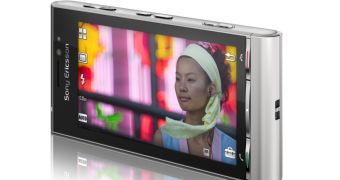The television ad for Sony Ericsson's Satio phone, which shows a woman using the device while taking pictures and chatting with friends over the Internet, was ruled by the Advertising Standards Authority as exaggerating the handset's ability to use Facebook. According to the UK advertising watchdog, the ad is considered as being misleading, following a complaint from a user who bought the device but found no Facebook application pre-installed on it, although the ad shows an icon for the social networking site.
According to ASA, the “On-screen text stated “PlayNow Arena terms, conditions and download charges may apply.” At the end of the ad the voice-over said “Packed with applications and more available to download” while the phone's screen was shown displaying icons of several popular applications, including Facebook.” However, the viewer who purchased the device found no Facebook application pre-installed, and also “understood that it was not compatible with the Facebook application.”
The Japanese-Swedish mobile phone maker responded to the complaint by saying that access to Facebook was included in the device, via links in the browser, and that the ad does not state anything regarding the level of functionality the Satio would offer when it comes to Facebook. At the same time, the handset vendor also states that the application was meant to be pre-loaded on the phone, though software issues prevented it from being there, and that the solution is now available for download from its application store.
ASA notes that the use of the Facebook logo and the voice-over in the ad are likely to mislead viewers, as they might understand that “the phone either came with the Facebook application or it could be downloaded.” According to ASA, the “ad breached CAP (Broadcast) TV Advertising Standards Code rules 5.1.1 and 5.1.3 (Misleading advertising), 5.2.1 (Evidence) and 5.2.2 (Implications).” This decision is based on the fact that the ad is seen as suggesting the application was either preloaded on the phone or available for download, but none of these was true at the time the ad was broadcast. “We told Sony Ericsson to ensure that product functionality depicted in ads was accurate at the time the ad was broadcast,” ASA concludes.

 14 DAY TRIAL //
14 DAY TRIAL //